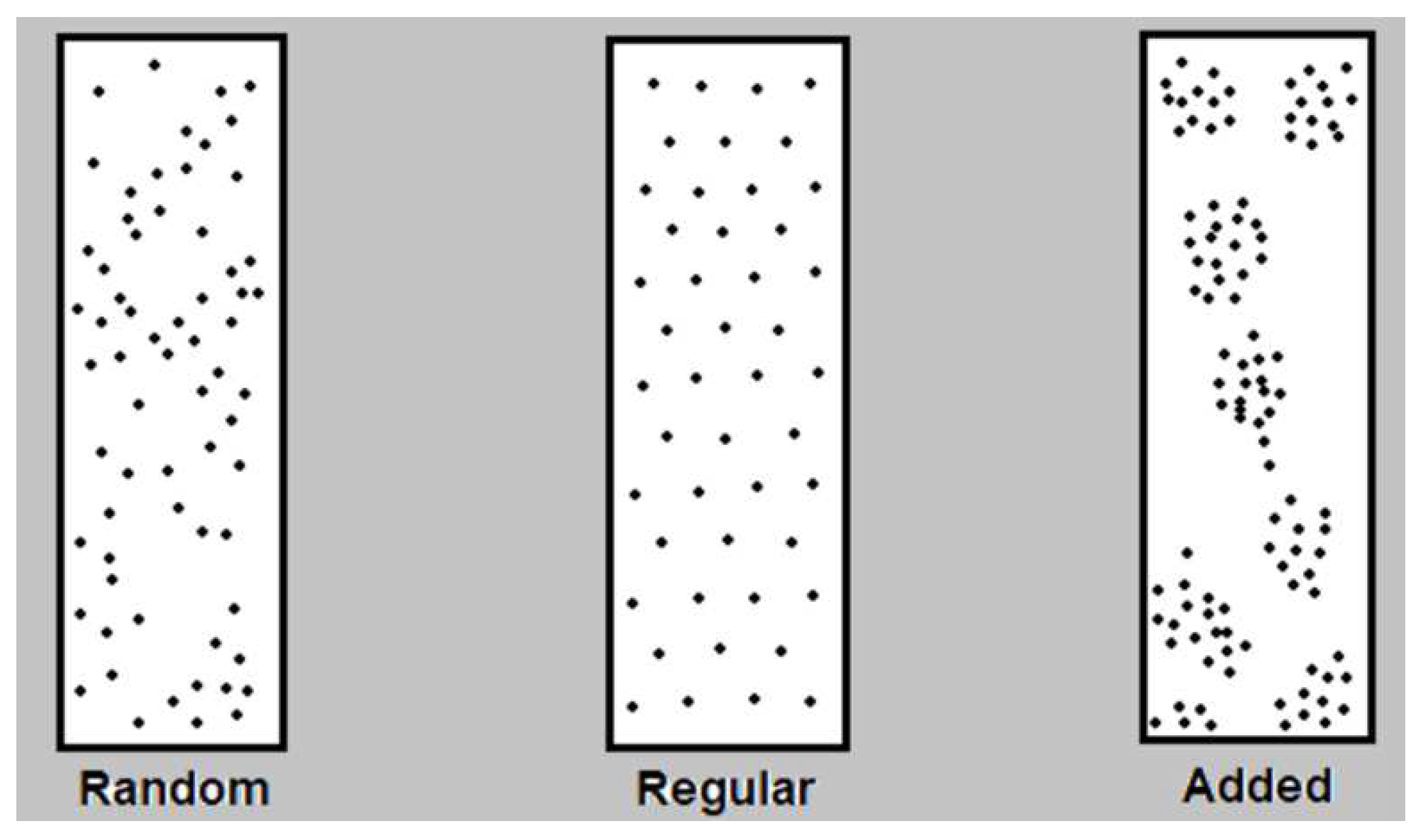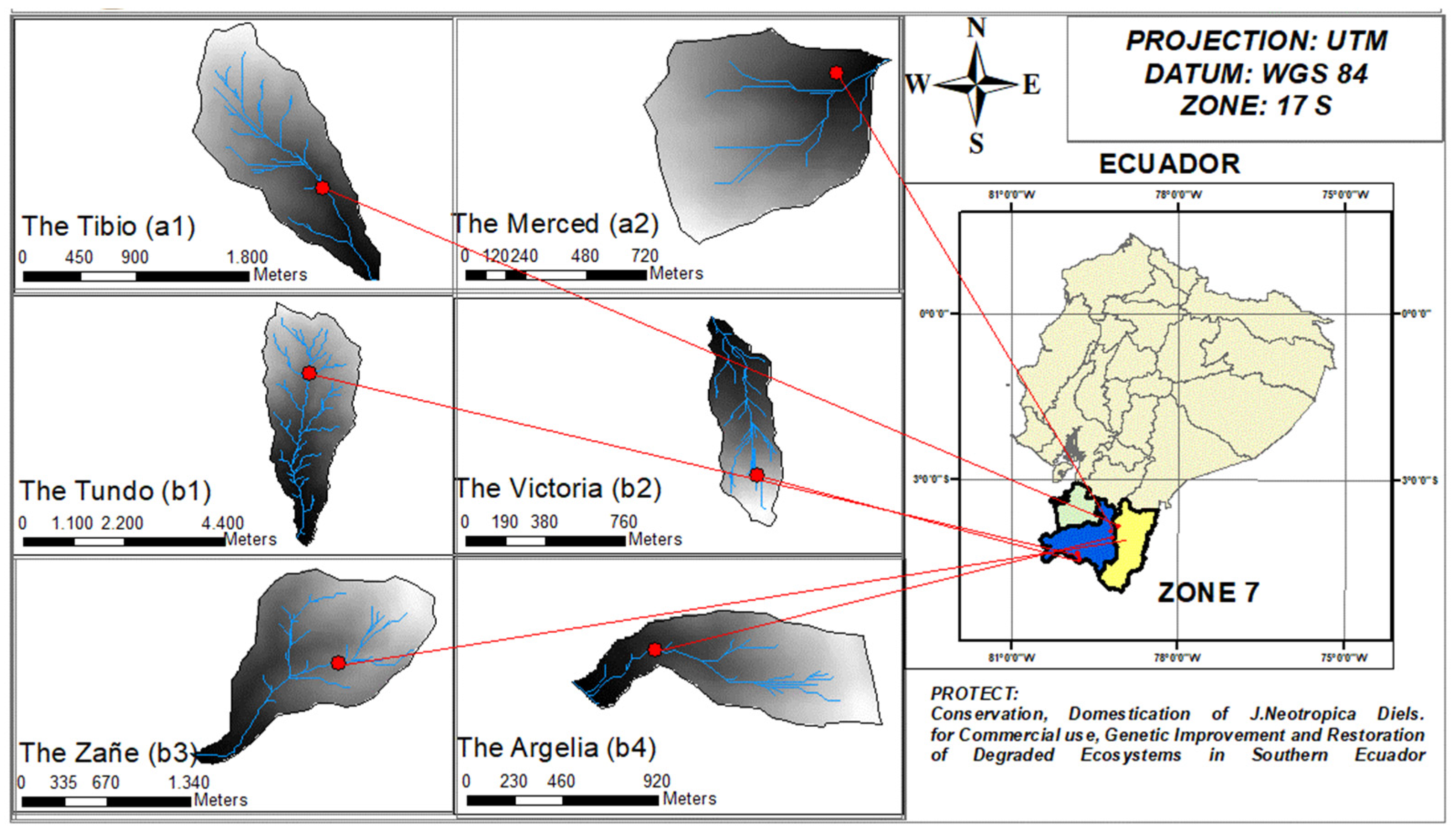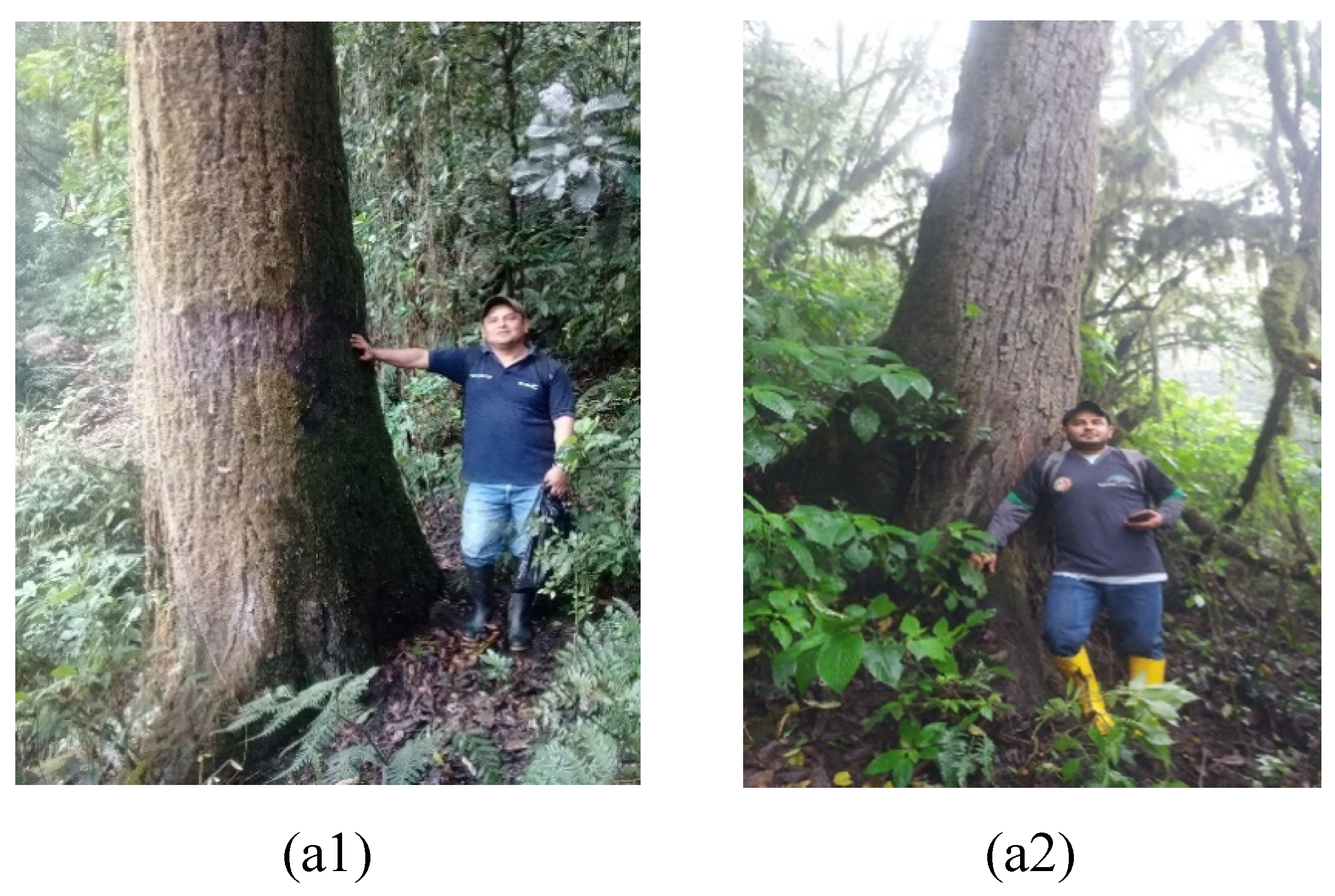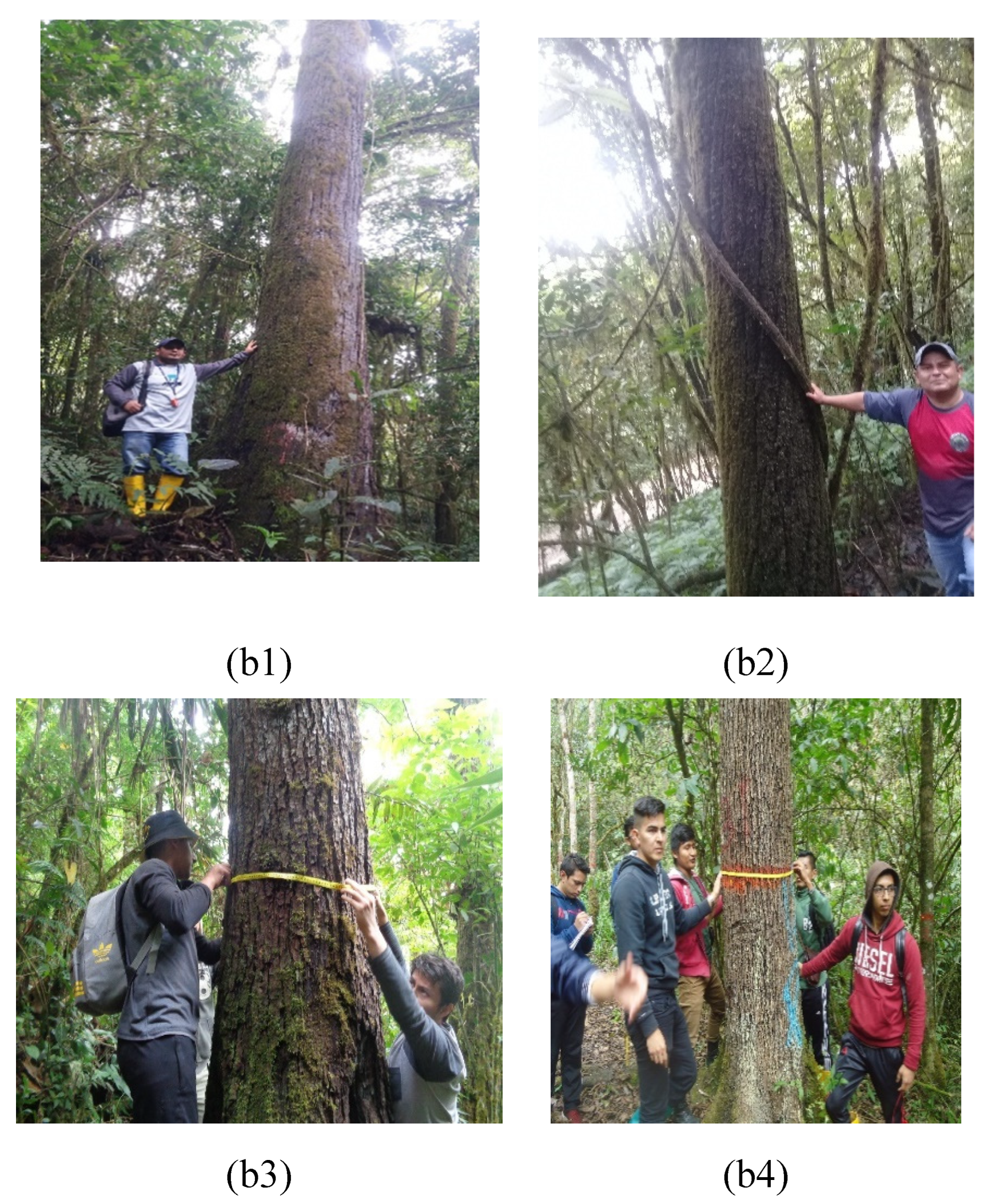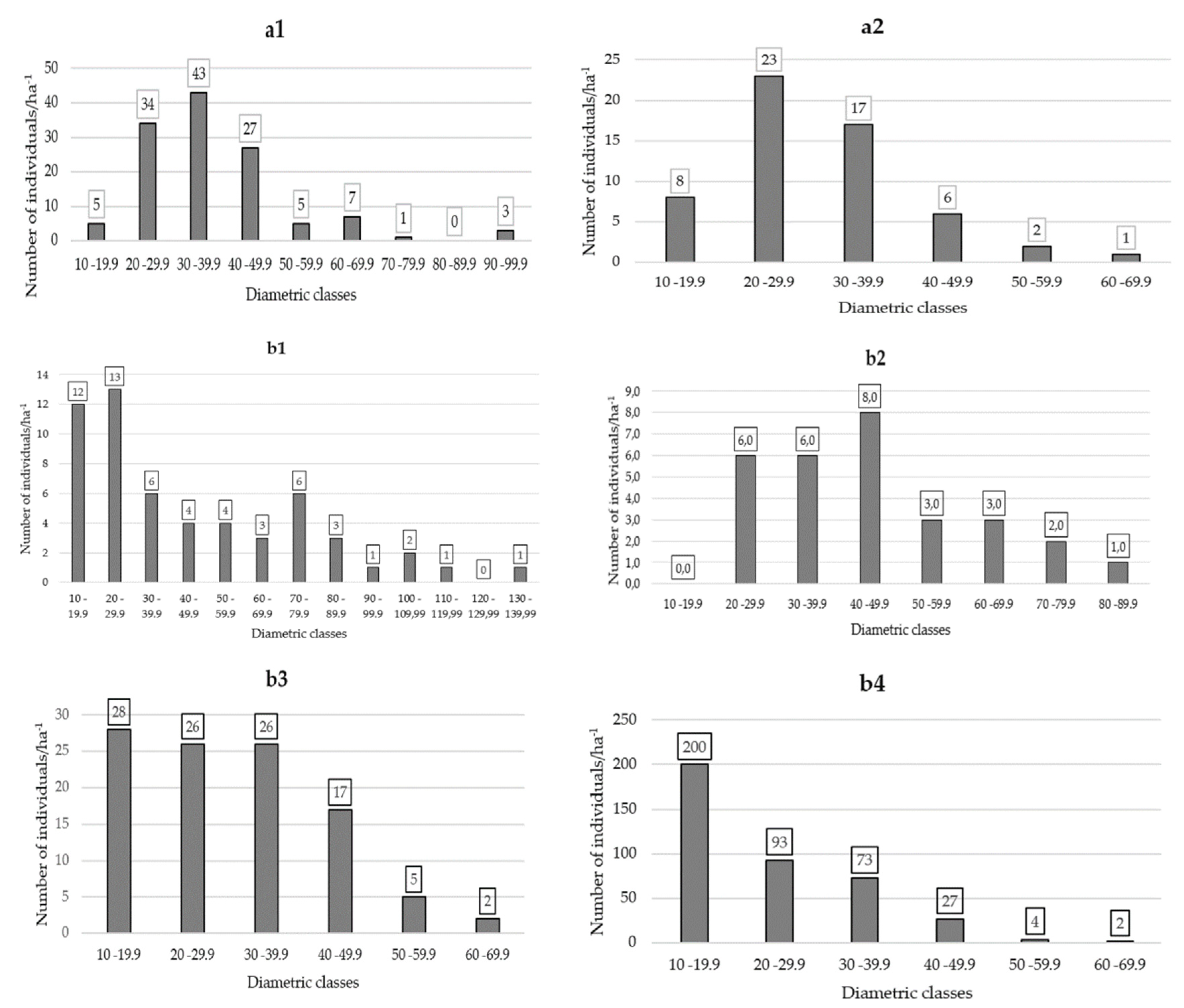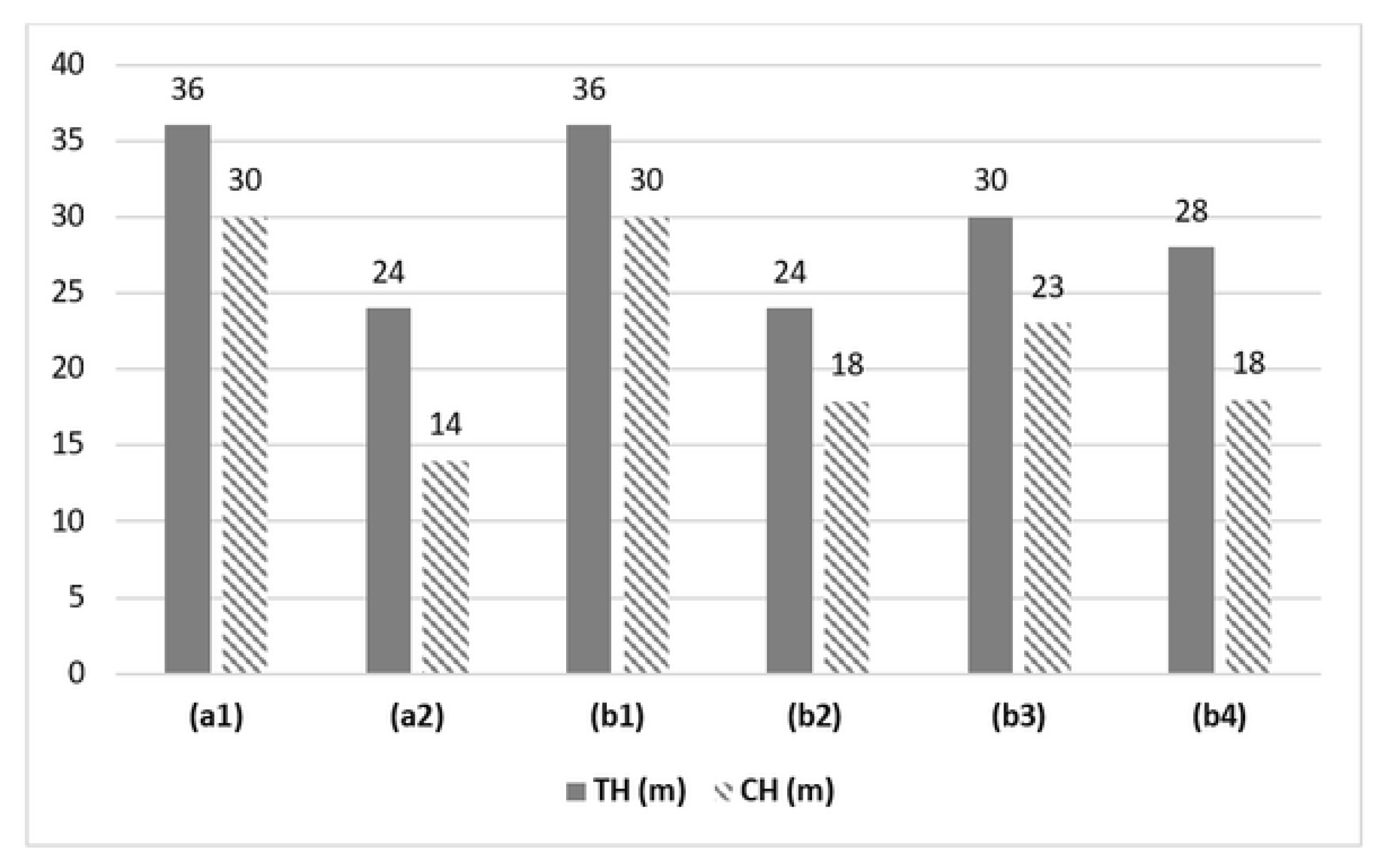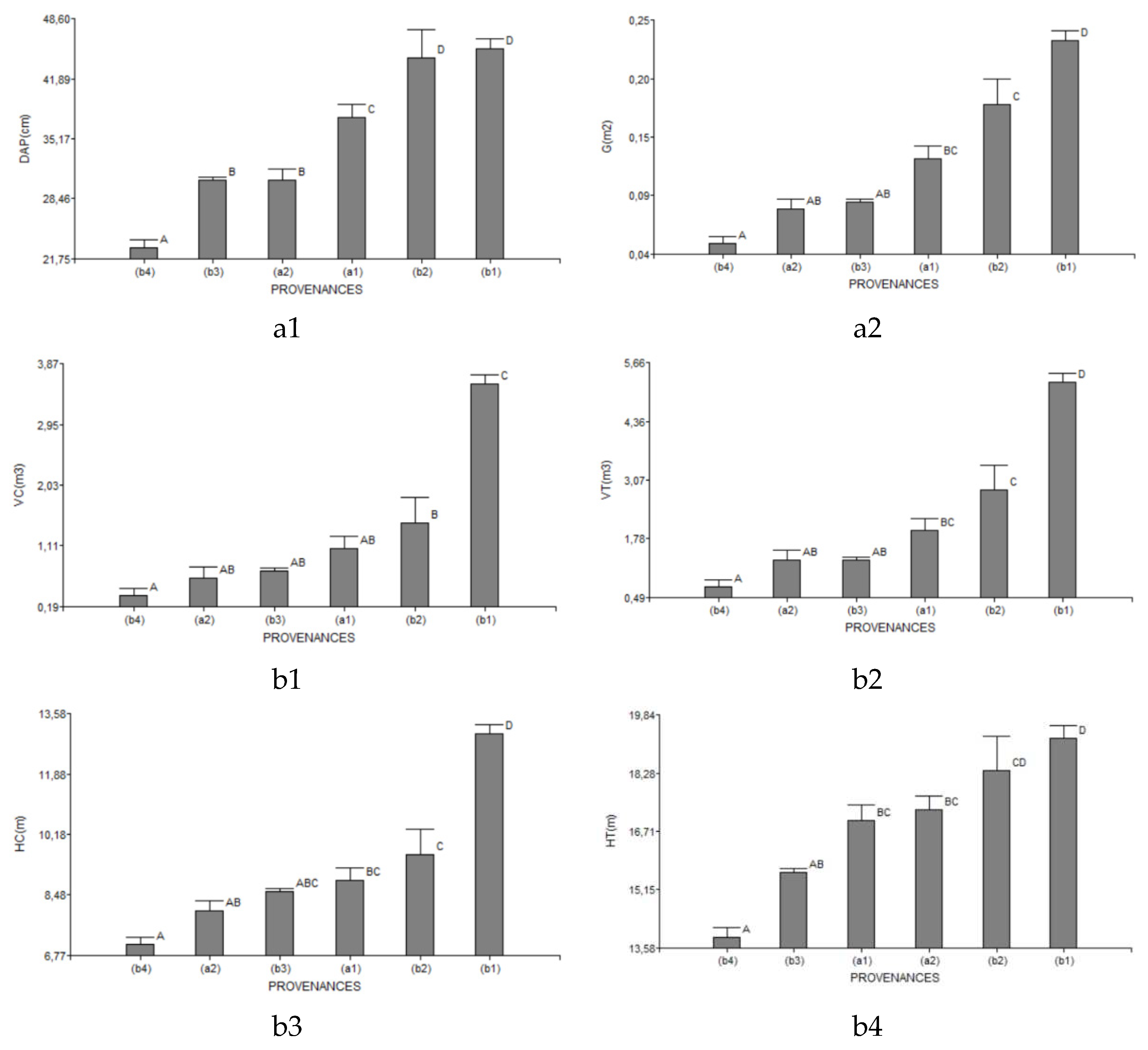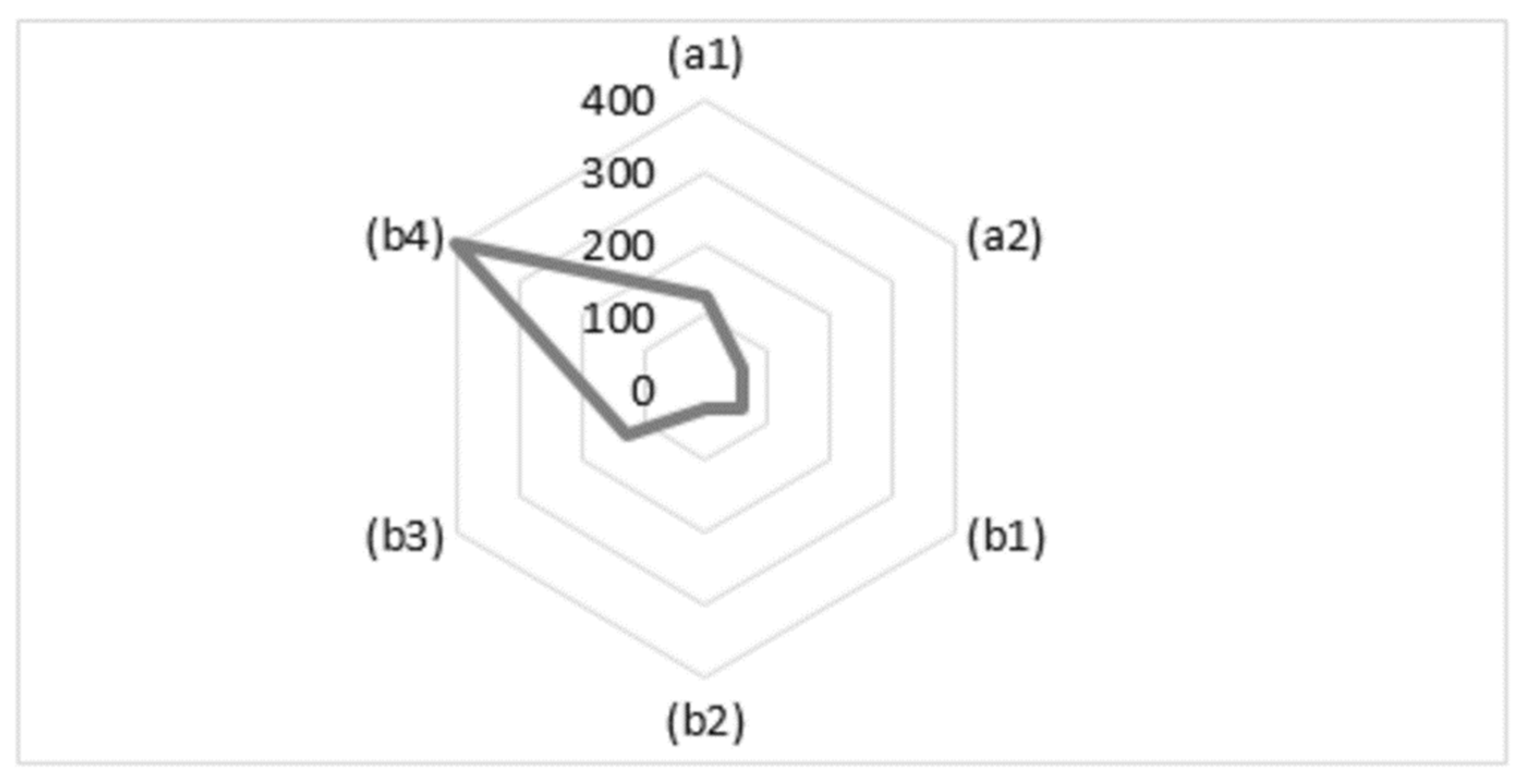1. Introduction
Understanding the distribution of a species is of utmost importance as it represents the geographic area where the species occurs and interacts with the ecosystem over time, be it short, medium, or long term [
25]. While some species have a wide natural distribution, others have a limited range. A broader distribution increases the likelihood of encountering genetic variation, as different populations adapt to diverse local environments.
The Juglans genus belongs to the Juglandaceae family, which originated on the Asian continent approximately 56 million years ago. This genus includes species such as ailantifolia, mandshurica, and regia, with the latter being the most extensively cultivated and widely distributed across both the old and the New World. This is primarily due to its highly nutritious fruits and valuable wood [8- 3].
Around 23 million years ago, other American walnut species emerged, retaining physical characteristics inherited from their Asian counterparts. These species migrated from North America to Central America, specifically Mexico, with
J. olanchana as the epicenter of speciation for other Central and South American species. Among these species,
J. boliviana is found in Bolivia,
J. australis in Argentina, and
J. neotropica in Colombia. The latter species also extends its presence to Peru and was discovered in Ecuador around the 15th century [
14].
Understanding the historical distribution patterns and speciation events of Juglans species is essential for various reasons. Firstly, it provides insights into the evolutionary processes that have shaped the genetic diversity and adaptations observed in different populations. Secondly, it aids in conservation efforts by identifying regions of high species richness and potential genetic reservoirs. Lastly, it enables the development of informed strategies for the management and sustainable use of these valuable resources. (2)
By examining the distribution of Juglans species across time and space, researchers can unravel the intricate relationships between the organisms and their environment. This knowledge can contribute to the conservation and sustainable utilization of these species, ensuring their survival in the face of environmental changes and human activities. Moreover, it offers opportunities for further research on the ecological interactions, evolutionary history, and potential applications of these remarkable trees.
In this study, we aim to expand our understanding of the distribution patterns and evolutionary dynamics within the
Juglans genus. By examining historical records, genetic data, and ecological factors, we seek to shed light on the factors influencing the distribution and diversification of
Juglans species. Through this research, we hope to contribute to the broader knowledge of plant evolution, conservation, and sustainable land management practices [
1]
Juglans neotropica, commonly known as "Nogal" or "Tocte," is an arboreal plant native to the South American Andes, specifically Ecuador, Colombia, Peru, and Bolivia. This species is of particular interest due to its wide distribution and cultural significance in Ecuador. It has been reported in various provinces of Ecuador, including Bolívar, Loja, Azuay, Tungurahua, Chimborazo, Pichincha, Napo, and Galapagos [
23].
In Ecuador, J. neotropica is predominantly found in the inter-Andean region, encompassing the valleys and foothills of the Andes mountain range. The species thrives in diverse ecosystems characterized by different altitudinal ranges. Within the Southern Montane Evergreen Forest of the Eastern Cordillera of the Andes, J. neotropica is distributed between 2200 and 3000 meters above sea level (masl). Specifically, it can be found in towns such as The Argelia, The Zañe, The Tibio, and The Merced. Furthermore, in the Catamayo-Alamor Semideciduous Foot Montane Forest ecosystem, which ranges from 400 to 1600 masl, J. neotropica is present in the provenances of The Tundo and The Victoria. Notably, in The Tundo provenance, walnut trees were also observed in the Evergreen Seasonal Montane Forest ecosystem, situated under the Catamayo-Alamor, at altitudes ranging from 1600 to 2000 masl.
The distribution of
J. neotropica extends beyond South America, with a surprising occurrence in New Zealand, specifically in the city of Auckland. However, its presence in South America, particularly in Ecuador, holds historical and cultural significance. There is evidence of its cultivation in the Equatorial Andes since pre-Columbian times, highlighting its long-standing importance to local communities [
4].
Understanding the distribution patterns and ecological preferences of J. neotropica is crucial for its conservation and sustainable management. Moreover, investigating the factors that contribute to its successful adaptation to different altitudes and ecosystems can provide valuable insights into the species' ecological resilience and potential for future cultivation. This article aims to further explore the distribution, habitat preferences, and cultural significance of J. neotropica in Ecuador, shedding light on its ecological role and potential conservation strategies. By analyzing existing literature and conducting field surveys, we aim to contribute to the broader understanding of this valuable species and promote its sustainable use and preservation in Ecuador and beyond.
Regarding the regulatory and protection entities responsible for endangered species in Ecuador, particularly J. neotropica, there is currently a lack of comprehensive information regarding its occurrence, distribution, abundance, and overall conservation status. As a result, the conservation efforts for this species have been hindered.
J. neotropica is currently classified as an endangered species, facing severe threats that have greatly hindered its regeneration in the early stages of growth. Anthropogenic activities, such as the recruitment of natural regeneration and expansion of agricultural land into forested areas, have played a significant role in this decline. This species is known to grow in a diverse range of soil types, including Ultisols, Entisols, Inceptisols, Alfisols, and Mollisols.
In terms of its ecological guild,
J. neotropica exhibits a semi-heliophytic nature, requiring shade during its initial stages of growth but becoming heliophytic as an adult, dominating the upper canopy of the forest. Additionally, as a deciduous species, the leaf litter of
J. neotropica plays a vital role in maintaining ecosystem balance by providing a source of energy, contributing nutrients, and forming humic substances in the soil. The most significant impact on this species is observed in South America's dry and montane forests, which serve as its natural habitat [
10,
11,
12,
13,
14,
15,
16,
17,
18,
19,
20,
21,
22,
23,
24].
2. Materials and Methods
2.1. Study Area
The study area of this research is situated in southern Ecuador or Zone 7 of Ecuador, encompassing the geographic coordinates 3°30' and 5°0' south latitude, and 78°20' and 80°30' west longitude. It shares borders with zones 5 and 6 to the north, Peru to the south and east, and Peru and the Pacific Ocean to the west [
21]. This region holds great ecological significance due to its distinct topographic, altitudinal, climatic, and soil characteristics.
To conduct the present study, we conducted fieldwork in the three provinces within Zone 7 that had documented occurrences of the species
J. neotropica. These provinces are Loja (11065.6 km2), El Oro (5866.6 km
2), and Zamora Chinchipe (10559.7 km
2), collectively covering an area of 27491.9 km
2, which represents approximately 11% of the total land area of Ecuador [
21].
In order to provide a comprehensive analysis of J. neotropica and its associated factors, we selected these provinces as they exhibit diverse characteristics that are vital to understanding the species' distribution and ecology. By focusing on these specific regions, we aim to contribute valuable insights into the habitat preferences, population dynamics, and conservation implications of J. neotropica within Zone 7.
Through our investigation, we seek to shed light on the ecological importance of this area and provide valuable information that can guide future conservation efforts. The findings of this study will help to improve our understanding of J. neotropica's habitat requirements, enabling more effective conservation strategies to protect this species and its associated ecosystems in Southern Ecuador.
2.2. Occurrence
To determine the occurrence of the species in Southern Ecuador, we consulted databases from nationally and internationally recognized entities such as Geo-Cat, Tropics Database, and the Ecuadorian Biodiversity System (BNDB). These platforms contain a comprehensive collection of regional and international botanical data sourced from various institutions, collectors, and research projects, both public and private.
Additionally, we gathered information from the decentralized Autonomous Governments (GAD´s), public institutions like MAATE, and private landowners. We also accessed data from the National University of Loja's Reinaldo Espinosa Herbarium and the Private Technical University of Loja, which house collections of books containing valuable information on the flora of the Andean forest.
To validate the occurrence of the species, we carefully verified the geographic details of all the collected information. Furthermore, we utilized internet resources to obtain reports on the species' occurrence. Notably, the most reliable and accurate information came from residents and owners of private land where the species was suspected to exist.
All the collected information was meticulously entered into the ARCGIS 10.8 geographic information system to generate precise geographic locations for the occurrence of the species.
By following this comprehensive methodology, we ensured that our research on the occurrence of the species in Southern Ecuador was based on reliable data from reputable sources and validated through geographic verification and resident reports. The utilization of the ARCGIS 10.8 system further enhanced the accuracy of our findings.
2.3. Structure
Following the identification of species occurrence, a series of field trips were conducted to select suitable sites where J. neotropica was found. These field trips spanned a duration of 12 months. Each site was visited a minimum of three and a maximum of five times, depending on the forest size.
To assess the parameters and structural indices, a comprehensive forest inventory was conducted, employing two distinct methods:
1. Statistical Method: A 100% inventory was performed for areas ≤ one hectare. For areas larger than one hectare, a simple random sampling approach was implemented.
2. Objective-based Method: An inventory was carried out for the management of natural forests, with the intensity ranging from 1% to 5% of the total area [
6].
To determine the reliability and representativeness of the sampled area, the sampling intensity formula (I) was applied.
By applying these methods, we ensured a rigorous and comprehensive assessment of the forest structure, allowing for accurate data collection and analysis. The statistical method provided a systematic approach, while the objective-based method facilitated the management of natural forests. The combination of these approaches ensured a robust evaluation of the species' habitat and supported the reliability of our findings.
The utilization of multiple visits to each site and the implementation of various inventory methods enabled us to capture a comprehensive picture of the forest's structure and characteristics. This approach contributes to the overall validity and reliability of our study, ensuring that our conclusions are well-founded and representative of the larger population of interest.
Where:
I = Sampling intensity
Ss = Surface of the sample
Pa = Population area
100 = Constant
2.3.1. Structural Parameters
To assess the structural characteristics of the study area, individuals with a diameter at breast height (DBA1.30m) of ≥ 10 cm were georeferenced. These individuals, commonly referred to as stems in forestry, were located using a Garmin Montana 650 GPS device.
Once the inventory and georeferencing of J. neotropica individuals were completed, various dasometric parameters were calculated, including DBH, TH, CH, G(m
2), and V(m
3). The DBH data of the inventoried individuals were then organized into diameter classes of 10 cm width, following the established protocol [
11].
Table 1.
Dasometric parameters.
Table 1.
Dasometric parameters.
| Denomination |
Formula |
| Diameter at breast height, above ground level |
DBH1.30 m
|
| Total height |
TH(m) |
| Commercial height |
CH(m) |
| Basal area of an individual |
(2) |
| Basal area of the population |
(3) |
| Volume of the stem in cubic meters |
(4) |
2.3.2. Structural Indices
Subsequently, a structural valuation index was calculated:
Where:
Iδ= Spatial distribution index
q= number of frames
ni= Number of individuals in í-th square
N= Total number of individuals in all q squares
Values of < 1 regular or uniform distribution, equal to one random distribution and greater than one indicate an aggregated distribution, respectively (Morisita 1959).
Figure 1.
Spatial distribution models. Fountain. Adapted from [
22]
.
Figure 1.
Spatial distribution models. Fountain. Adapted from [
22]
.
2.4. Abundance
To assess the abundance of
J. neotropica, we followed the guidelines set forth in [
12], as outlined in ministerial agreement 125, article 11. According to these guidelines, a species is considered to have low abundance when the density is less than one tree per three hectares (0.33 trees/ha
−1). Hence, we determined the abundance of
J. neotropica by identifying the reference tree in each site and applying the specified criteria. This approach allows for an accurate evaluation of the species' abundance and facilitates comparisons across different sites.
Finally, the following formula was applied:
Where:
Ai = Absolute abundance
= Number of individuals of a species present in an area
4. Discussion
4.1. Occurrence
The occurrence of the J. neotropica species was investigated in southern Ecuador, specifically in the provinces of Loja and Zamora Chinchipe, excluding the province of Oro. Six localities with areas greater than 5000 m2 were identified as potential habitats for the species. Previous studies support the findings of this research on the occurrence of the species in the identified localities.
One study conducted by [
7] reported the presence of the Tundo walnut forest in the Sozoranga Canton of the province of Loja. This forest comprises 96 hectares of native forest, located at altitudes ranging from 800 to 2645 meters above sea level (masl). The area has a strongly inclined relief, which aligns with the findings of our study regarding the occurrence of the
J. neotropica species.
Additionally, [
18]documented the occurrence of the species in the Loja canton of the Loja province, specifically in the Argelia sector. In this location, a planted forest approximately 70 years old has provided a suitable habitat where the
J. neotropica species has naturalized effectively. The forest covers an area of 0.7 hectares and spans an altitudinal range of 2170 to 2250 masl, corroborating the findings of our study.
However, our research has revealed new occurrences of the J. neotropica species in previously unreported locations. The first location is Cerro el Zañe in the Loja canton, characterized by an altitudinal range of 2100 to 2800 masl and a strongly inclined relief. The second location, the Victoria, corresponds to the Macará canton and spans an altitudinal range of 1400 to 1600 meters above sea level in the province of Loja. Furthermore, the species has been observed in the Merced, which spans an altitudinal range of 200 to 2200 masl in the Zamora canton, as well as in The Tibio, with an altitudinal range of 2400 to 2600 masl, also located in the Zamora canton of the Zamora Chinchipe province. The precise locations of these occurrences have been reported for the first time in this study.
According to [
9], the
Juglans species exhibits a relative gregariousness in mature forest conditions, resulting in its scarcity within natural ecosystems. This pattern aligns with the findings of our research, further supporting the similarity between our study and previous observations of
Juglans species.
4.2. Structure
Regarding the structural parameters of the forest in the discovered provenances of the
J. neotropica species, all the dendrometric variables were correctly identified. However, the limited availability of research related to this species makes it challenging to compare our findings with other studies. Nevertheless, a study by [
17] notes that the planted forest of J. neotropica in Algeria exhibits very similar dendrometric variables to those observed in our study. Additionally, [
5] mentions that young walnut trees have well-formed stems, reaching heights of 25 to 30 meters with a diameter at breast height (DBH) of 90 cm. Our observations align with these findings at the study sites.
In terms of Morisita's structural index, the species demonstrates an aggregated distribution behavior (Iδ > 1.0), indicating a preference for dominating specific sectors within the ecosystem. As described by [
15], this type of distribution is not random but rather irregular, occurring in response to local habitat differences (microhabitats). The authors also highlight that aggregate distribution is the most frequent pattern observed in nature and is a result of the inherent tendency of individuals to aggregate. Therefore, plants tend to disperse their seeds in close proximity or in the same location where they reside.
Furthermore, the distribution of the species indicates a decreasing number of individuals over time, suggesting a gradual decline. However, it can still be found, albeit with difficulty, between 2200-3000 meters above sea level (masl) in natural forest ecosystems covering areas greater than 5000 m2.
4.3. Abundance
The abundance data obtained reveals notable differences in the number of individuals per hectare for the species
J. neotropica across different provenances. The highest abundance was observed in the town of Argelia, followed by Zañe and Tibio. According to a previous study [
17], the Algerian forest, being a forest plantation, exhibited the highest number of individuals per unit area in this investigation. This particular provenance, with an approximate age of 70 years, has adapted remarkably well to the prevailing climatic conditions at the site.
The Tundo Protected Forest and the Tibio provenance, which are native forests, also reported a relatively higher number of individuals per unit area according to another study [
13]. Despite being located in different provinces, these forests share similar climate characteristics, which contribute to their higher abundance.
However, when considering the area extension, it is worth noting that the Tundo provenance boasts the largest forest area, covering approximately 130 hectares, whereas Argelia has the smallest extent, with only 0.7 hectares.
In terms of
J. neotropica abundance, variations were observed in the number of individuals per hectare across the different provenances. These differences can be attributed to the severe threat posed to these ecosystems by various anthropic activities, such as livestock rearing and agriculture [
16]. As a consequence, the species has been categorized as endangered by [
10].
To better understand the abundance patterns and conservation status of J. neotropica, it is crucial to consider the interplay between provenance, climate conditions, and anthropic activities. The Algerian provenance, originating from a forest plantation, exhibited the highest abundance due to its successful adaptation to the local climatic conditions over several decades. Meanwhile, the Tundo Protected Forest and the Tibio provenance, being native forests, demonstrated a relatively higher abundance owing to their favorable climate characteristics despite their geographical separation. However, the overall abundance of J. neotropica is alarmingly affected by human activities, with livestock rearing and agriculture exerting significant pressure on the species' survival.
5. Conclusions
In southern Ecuador, there are not many relicts or fragments of native forests of J.neotropica, the few fragments that exist presented a vertical structure in the form of an inverted j, which means that there is good growth dynamics, insofar as to the vertical structure, the individuals presented a dominance of the site with respect to other individuals that share their habitat. However, the number of individuals per hectare is not abundant in all locations.
The data obtained from the analysis of variance between the dasometric variables in relation to the different provenances of J. neotropica indicate that there are significant statistical differences, finding better growth in the fragments of forests with ecosystems of Semideciduous Forest Foot Montane of Catamayo-Alamor, which has a altitudinal variation of 400-1600 masl, as well as ecosystems of the Lower Montane Seasonal Evergreen Forest of Catamayo-Alamor, which has an altitudinal variation of 1600-2000 masl.
The number of trees found in the Argelia forest provenance is greater in relation to the other provenances because this is a naturalized plantation with more than 70 years of age. However, its forest area is very small with 0.7 hectares and with lower dasometric growth than the rest of the provenances studied.
Wild fruit trees, especially the J. neotropica species, play a crucial role in preserving biodiversity and providing natural resources in various ecosystems. It is essential to recognize the significance of these species in conserving flora and fauna, particularly in places like the Tundo walnut forest in the canton of Sozoranga, where favorable conditions exist for their development. The protection and promotion of these wild trees are fundamental to maintaining environmental harmony and balance, ensuring a sustainable future for future generations.
Figure 2.
Geographic location of occurrences of the specie J. neotropica in areas greater than 0.5 hectares of forest in southern Ecuador.
Figure 2.
Geographic location of occurrences of the specie J. neotropica in areas greater than 0.5 hectares of forest in southern Ecuador.
Figure 3.
Measurement of structural parameters in the different localities of southern Ecuador, The Tibio (a1), The Merced (a2); The Tundo (b1) The Victoria (b2), The Zañe (b3), The Argelia (b4).
Figure 3.
Measurement of structural parameters in the different localities of southern Ecuador, The Tibio (a1), The Merced (a2); The Tundo (b1) The Victoria (b2), The Zañe (b3), The Argelia (b4).
Figure 4.
Number of individuals per class diameter classes in different provenances of the study area at DBH(1,30cm). The Tibio (a1), The Merced (a2), The Tundo (b1), The Victoria (b2), The Zañe (b3), The Argelia (b4).
Figure 4.
Number of individuals per class diameter classes in different provenances of the study area at DBH(1,30cm). The Tibio (a1), The Merced (a2), The Tundo (b1), The Victoria (b2), The Zañe (b3), The Argelia (b4).
Figure 5.
Vertical structure in the different provenances of the study area The Tibio (a1), The Merced (a2), The Tundo (b1), The Victoria (b2), The Zañe (b3), The Argelia (b4).
Figure 5.
Vertical structure in the different provenances of the study area The Tibio (a1), The Merced (a2), The Tundo (b1), The Victoria (b2), The Zañe (b3), The Argelia (b4).
Figure 6.
Analysis of variance of dasometric variables in the different provenances of the study area The Tibio (a1), The Merced (a2), The Tundo (b1), The Victoria (b2), The Zañe (b3), The Argelia (b4).
Figure 6.
Analysis of variance of dasometric variables in the different provenances of the study area The Tibio (a1), The Merced (a2), The Tundo (b1), The Victoria (b2), The Zañe (b3), The Argelia (b4).
Figure 7.
Number of individuals of the species recorded per hectare in the different provenances of the study area The Tibio (a1), The Merced (a2), The Tundo (b1), The Victoria (b2), The Zañe (b3), The Argelia (b4).
Figure 7.
Number of individuals of the species recorded per hectare in the different provenances of the study area The Tibio (a1), The Merced (a2), The Tundo (b1), The Victoria (b2), The Zañe (b3), The Argelia (b4).
Table 2.
Occurrence of J. neotropica Diels growth sites in Southern Ecuador.
Table 2.
Occurrence of J. neotropica Diels growth sites in Southern Ecuador.
| PROVINCE |
CANTON |
FOREST SITE |
AREA (ha) |
| Zamora chinchipe |
Zamora |
"El Tibio" (a1) |
0.8 |
| "La Merced" (a2) |
3 |
| Loja |
Sozoranga |
"El Tundo" (b1) |
120 |
| Macará |
"La Victoria" (b2) |
0.9 |
| Loja |
"El Zañe" (b3) |
92 |
| "La Argelia" (b4) |
0.7 |
| El Oro |
No records |
No records |
0 |

